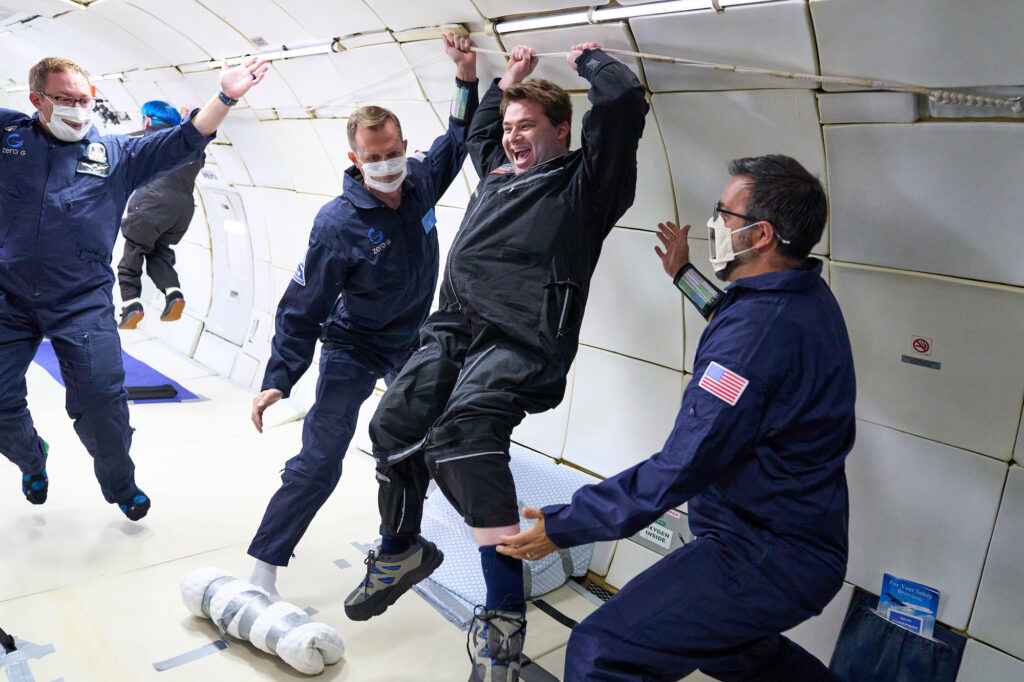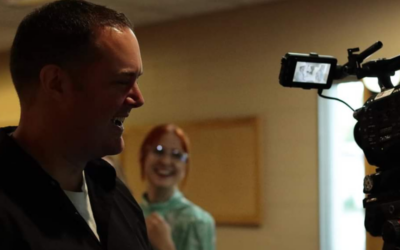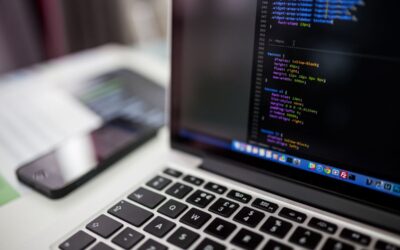Many people fantasize about becoming the next Daniel Craig, Djimon Hounsou, or Kate Winslet. Young Sawyer Rosenstein was headed in that direction. Working as a professional child actor in New York City—the city of colossal skyscrapers, baked pretzels, and the Yankee stadium—Rosenstein performed in a series of commercials, jingles, voiceovers, and Macy’s Thanksgiving parades. But, in 2006, at the age of 12, things would dramatically change for him. While at his New Jersey middle school, a bully ambushed him, striking Rosenstein in the face. Two days later, Rosenstein awoke paralyzed from the waist down, making him a T10-12 paraplegic.
But that wasn’t the end of Rosenstein’s dreams of becoming a real-life action star. Years later, in 2021, Mission: AstroAccess, a project devoted to disability inclusion, selected Rosenstein as an ambassador. Much to his disbelief, he’d get to take a spin on a zero-gravity flight with 11 other disabled persons in Long Beach, California. His mission narrowed in on three objectives: to show he could get from one point to another, to hold his position and to control where his legs went when floating.
Now, a year following his flight, he has gathered various sentiments from his 15 parabolas, especially in terms of design and accessibility. What’s most striking is Rosenstein claims that with declining spaceflight costs and with Mission: AstroAccess’ accessibility designs underway, it opens those disabled to the possibility of space exploration and a more accessible earth.
“This is essentially dawn of the new age of commercial space, where commercial space is becoming more readily available, it’s becoming cheaper.”
“The hope is that the work that’s being done from this [Flight One] will lead to allowing people with disabilities to fly on those flights or fly to space and that as these companies are designing spacecraft, it won’t be an afterthought,” he said.
Because of newly emerging private space companies like Space X, Rocket Lab and Mission: AstroAcess, costs are lowering, innovations are arising and space inclusion is inching to the forefront, according to an NBC article.
“The more we do with these flights, hopefully with these things we find out, they’ll be able to be incorporated into these designs. And I can say that at least with what I had with flight one, that some of these changes that they can make are so simple,” Rosenstein explained.

In the planning phase, Rosenstein vocalized concern for his legs flying apart since he lacks control over them. The group ended up using a Velcro strap to hold his legs together. Needless to say, it worked; it didn’t require a major overhaul to be designed as many would assume. From this design along with others, like placing pockets and zippers on flight suits pertinent to the ambassador’s needs, he hopes that people will see how simple modifications are in these circumstances and that they can be easily incorporated.
However, Rosenstein is hoping for more than space equality.
“As much as [Flight One] was about creating accessibility in space, space flight and spacecraft, a lot of it is honestly just to help design for accessibility here on earth because so many times people claim things are accessible and they’re not, or something has to be retrofitted to be accessible.”
To create a more accessible earth, he and the Astro team are preparing the Flight 2 crew for their upcoming missions and are working on evolving their initial designs.
He’s optimistic that “something we design that can help keep us stationary in space is something that can be used to help us here back on earth or some of these designs or tests that we do on Zero-G can help change accessibility on earth as well.”
“Knowing there are people out there working on ways to make this accessible and are actually trying to get people with disabilities at least into a Zero-Gravity environment to practice, prepare and all these companies allow for people with disabilities to fly, it changed my whole perspective,” said Rosenstein.
Mission: AstroAccess’ Flight 2 lifts off November 19, 2022, from Fort Lauderdale, Florida. The organization now accepts international applications, but applications for the second flight are currently closed.





